#Scraping TripAdvisor Reviews
Explore tagged Tumblr posts
Text
How Web Scraping TripAdvisor Reviews Data Boosts Your Business Growth
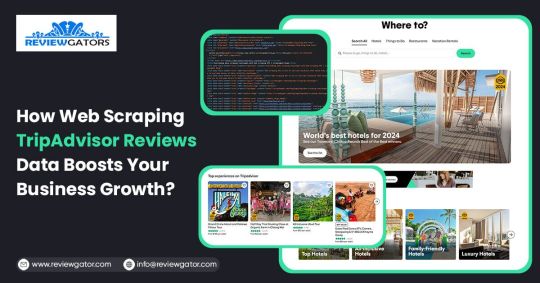
Are you one of the 94% of buyers who rely on online reviews to make the final decision? This means that most people today explore reviews before taking action, whether booking hotels, visiting a place, buying a book, or something else.
We understand the stress of booking the right place, especially when visiting somewhere new. Finding the balance between a perfect spot, services, and budget is challenging. Many of you consider TripAdvisor reviews a go-to solution for closely getting to know the place.
Here comes the accurate game-changing method—scrape TripAdvisor reviews data. But wait, is it legal and ethical? Yes, as long as you respect the website's terms of service, don't overload its servers, and use the data for personal or non-commercial purposes. What? How? Why?
Do not stress. We will help you understand why many hotel, restaurant, and attraction place owners invest in web scraping TripAdvisor reviews or other platform information. This powerful tool empowers you to understand your performance and competitors' strategies, enabling you to make informed business changes. What next?
Let's dive in and give you a complete tour of the process of web scraping TripAdvisor review data!
What Is Scraping TripAdvisor Reviews Data?
Extracting customer reviews and other relevant information from the TripAdvisor platform through different web scraping methods. This process works by accessing publicly available website data and storing it in a structured format to analyze or monitor.
Various methods and tools available in the market have unique features that allow you to extract TripAdvisor hotel review data hassle-free. Here are the different types of data you can scrape from a TripAdvisor review scraper:
Hotels
Ratings
Awards
Location
Pricing
Number of reviews
Review date
Reviewer's Name
Restaurants
Images
You may want other information per your business plan, which can be easily added to your requirements.
What Are The Ways To Scrape TripAdvisor Reviews Data?
TripAdvisor uses different web scraping methods to review data, depending on available resources and expertise. Let us look at them:
Scrape TripAdvisor Reviews Data Using Web Scraping API
An API helps to connect various programs to gather data without revealing the code used to execute the process. The scrape TripAdvisor Reviews is a standard JSON format that does not require technical knowledge, CAPTCHAs, or maintenance.
Now let us look at the complete process:
First, check if you need to install the software on your device or if it's browser-based and does not need anything. Then, download and install the desired software you will be using for restaurant, location, or hotel review scraping. The process is straightforward and user-friendly, ensuring your confidence in using these tools.
Now redirect to the web page you want to scrape data from and copy the URL to paste it into the program.
Make updates in the HTML output per your requirements and the information you want to scrape from TripAdvisor reviews.
Most tools start by extracting different HTML elements, especially the text. You can then select the categories that need to be extracted, such as Inner HTML, href attribute, class attribute, and more.
Export the data in SPSS, Graphpad, or XLSTAT format per your requirements for further analysis.
Scrape TripAdvisor Reviews Using Python
TripAdvisor review information is analyzed to understand the experience of hotels, locations, or restaurants. Now let us help you to scrape TripAdvisor reviews using Python:
Continue reading https://www.reviewgators.com/how-web-scraping-tripadvisor-reviews-data-boosts-your-business-growth.php
#review scraping#Scraping TripAdvisor Reviews#web scraping TripAdvisor reviews#TripAdvisor review scraper
2 notes
·
View notes
Text
Scraping Reviews from TripAdvisor: A Comprehensive Guide

Are you tired of scrolling through endless reviews on TripAdvisor to plan your next vacation? Look no further than the TripAdvisor Scraper, a powerful tool that can help you streamline your travel planning process. In this article, we'll explore the benefits of using a TripAdvisor scraper and how it can unleash your travel planning potential.
What is a TripAdvisor Scraper?
A TripAdvisor scraper is a software tool that extracts data from the popular travel review website, TripAdvisor. It collects information such as hotel reviews, ratings, and prices, and presents it in a structured format for easy analysis. This allows users to quickly compare and contrast different options and make informed decisions for their travel plans.
Save Time and Effort
One of the biggest advantages of using a TripAdvisor scraper is the time and effort it can save you. Instead of manually searching through countless reviews and ratings, the scraper does the work for you. It collects all the necessary information and presents it in an organized manner, allowing you to make efficient and informed decisions for your trip.
Find the Best Deals
With a TripAdvisor scraper, you can easily compare prices and ratings for different hotels and accommodations. This can help you find the best deals and save money on your travels. The scraper also allows you to filter results based on your budget and preferences, making it easier to find the perfect option for your trip.
Analyze Reviews and Ratings
In addition to collecting data, a TripAdvisor scraper also allows you to analyze reviews and ratings. This can be especially helpful for businesses in the travel industry, as they can gain valuable insights into customer satisfaction and areas for improvement. By understanding the sentiments and opinions of customers, businesses can make necessary changes to enhance their services and attract more customers.
Create a Review Aggregator
A TripAdvisor scraper can also be used to create a review aggregator, which is a website or platform that collects reviews from multiple sources and presents them in one place. This can be a valuable resource for travelers, as they can easily access reviews from various sources and make informed decisions for their trips. As a business, having a review aggregator can also help you attract more customers and improve your online reputation.
Stay Ahead of the Competition
By utilizing a TripAdvisor scraper, businesses can stay ahead of the competition by keeping track of their competitors' reviews and ratings. This allows them to identify areas where they can improve and stay on top of industry trends. By constantly monitoring and analyzing reviews, businesses can maintain a strong online presence and attract more customers.
In conclusion,
The TripAdvisor scraper is a powerful tool that can unleash your travel planning potential. It saves time and effort, helps you find the best deals, and allows you to analyze reviews and ratings for valuable insights. Whether you're a traveler or a business in the travel industry, the foods data scraper is a must-have tool for efficient and effective travel planning. Have you used a TripAdvisor scraper before? Share your experience in the comments below.
#food data scraping#grocerydatascraping#restaurant data scraping#food data scraping services#restaurantdataextraction#fooddatascrapingservices#web scraping services#TripAdvisor Reviews#reviews restaurant#hotel reviews#TripAdvisor Reviews service
0 notes
Text
Discover Niche Travel Experiences in 2025 with Data
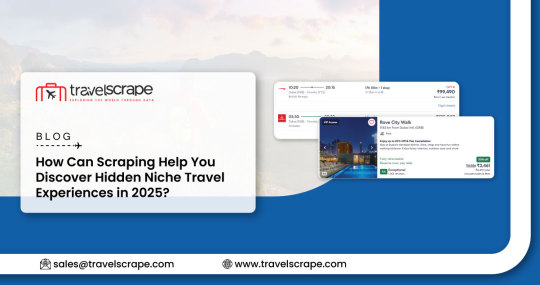
Introduction
In 2025, travelers are no longer satisfied with standard tourist packages or overcrowded destinations. The new age of exploration is rooted in personalization, authenticity, and discovering the unknown. Data scraping is at the heart of this travel evolution — a dynamic technology transforming how niche travel experiences are discovered, curated, and offered. By extracting valuable insights from online platforms, travel companies, marketers, and startups are now creating hyper-personalized itineraries and uncovering lesser-known adventures across the globe.
This is not just about analyzing flight fares or hotel bookings. It's about tapping into the social pulse of blogs, reviews, hidden geotags, local event boards, community forums, and travel content to surface experiences that resonate deeply with individual travelers. Whether it's a culinary retreat in a Himalayan village, a stargazing tour in Chile's Atacama Desert, or a folklore trail in alternative travel destinations across Eastern Europe, scraping data is the key to unlocking these discoveries. Businesses that scrape local experience data are uniquely positioned to meet the evolving expectations of the modern traveler.
The Rise of Niche Travel Experiences in 2025
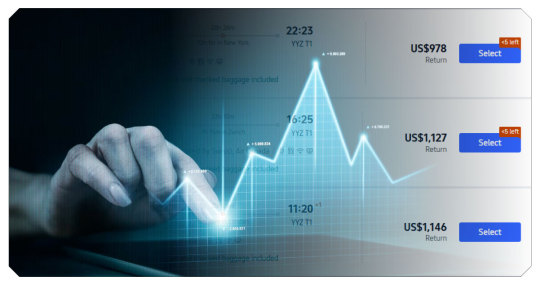
Niche travel is becoming the preferred mode of exploration. It emphasizes personalized journeys, off-the-beaten-path adventures, and local immersion. What was once labeled "alternative" is now central to modern travel preferences. The pandemic years reprogrammed travelers to seek quieter, meaningful escapes. With that shift, the role of data has grown tremendously in identifying patterns, interests, and untapped opportunities.
Search engines, review sites, local blogs, user-generated content, and online forums are a goldmine of insight. Travelers today want experiences tailored to specific interests: photography tours, spiritual retreats, historical reconstructions, regenerative farm stays, or wildlife volunteering. By scraping data from these unique travel data sources, travel platforms can stay ahead of the curve and offer curated packages that resonate with evolving tastes. Technologies like AI travel discovery now play a key role in decoding emerging travel trends 2025, enabling smarter, data-driven trip planning that aligns perfectly with what modern explorers seek.
Alternative Travel Destinations Unearthed Through Data
Scraped data offers a clear view of trending locations that have not gone mainstream. For instance:
Hidden Alpine Villages in Austria: Data from Instagram geotags, small hostel reviews, and blog mentions may highlight scenic, untouched alpine towns with rich cultural traditions through offbeat travel scraping.
Remote Islands in the Philippines: Using sustainable experience scraping for user reviews and local ferry timetables, travel companies can map out routes to secluded islands that offer untouched beaches and community-run homestays.
Art Revival Districts in Eastern Europe: Travel platforms extract cultural event data from local event listings, cultural board websites, and niche art blogs to build itineraries around evolving creative communities in towns like Plovdiv (Bulgaria) or Timișoara (Romania).
These examples show how platforms that scrape adventure travel opportunities uncover the unknown — the unique, the hyper-local, and the culturally rich.
Real-Time Personalization Through Scraped Travel Data
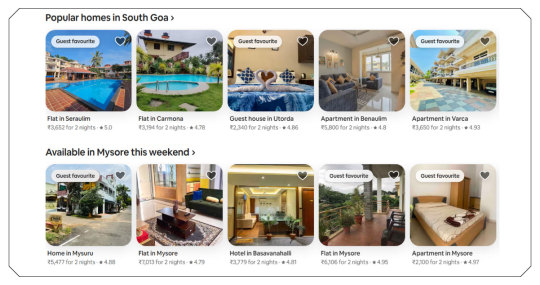
Modern travel is not just about where people want to go — it's about what they want to feel, learn, or contribute. Scraping real-time content from travel forums, TripAdvisor, Reddit, Airbnb Experiences, and even TikTok provides granular insights into individual preferences. These include:
Preferred travel times (seasonal peaks and offbeat months) – easily mapped with a custom itinerary generator
Type of cuisine people are searching for – identified and clustered through AI travel exploration
Local traditions that align with visitor interests – key to curating hidden gem destinations 2025
Areas with increasing user interest but low commercial promotion – ideal for experience-based travel planning
Imagine a solo traveler interested in yoga retreats. By scraping yoga event listings, teacher training blogs, and Google Reviews of wellness centers, a travel platform can recommend a tranquil experience in a village outside Rishikesh rather than a commercial ashram.
Role of AI Travel Discovery in the Data Scraping Process
AI-powered engines take scraped travel data and elevate it by predicting behavior and preferences. These engines digest massive datasets, from browsing patterns to forum threads, and cluster them based on similar emotional triggers, geographic intent, or lifestyle goals.
When AI travel discovery tools ingest scraped content like restaurant reviews, travel vlogs, Airbnb host notes, or digital travel journals, they can classify the content into meaningful categories:
Adventurous yet sustainable
Culinary but hyperlocal
Digital-nomad-friendly yet immersive
Such personalization isn't manual anymore. AI-driven scraping allows travel providers to automate micro-trend identification and tailor packages for niche traveler groups, such as solo female hikers, slow travelers, eco-volunteers, cultural enthusiasts, and more.
Scraping Local Experience Data: A Goldmine for 2025 Travel Agencies
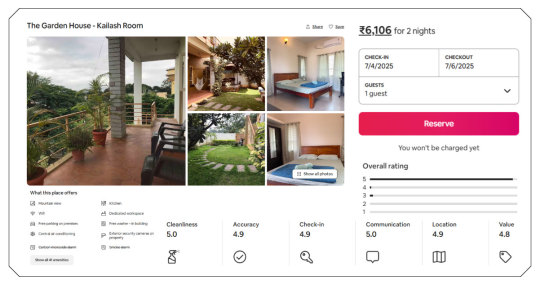
Beyond general destination data, scraping local experience data holds enormous potential. This includes data from:
Community events
Village marketplaces
Local guide offerings
Pop-up art shows or craft fairs
Farm-to-table events and eco-workshops
Travel platforms that mine this data can offer curated, immersive experiences. For instance, a regional search across artisanal markets in Morocco and scraped social media conversations might reveal a hidden cooperative of female weavers offering workshops — something no regular tour brochure would include.
In 2025, this hyperlocal approach will be the differentiator. The ability to discover and promote raw, local experiences will be the hallmark of successful niche travel businesses.
Evolving Preferences Captured from User-Generated Content
Every review, vlog, post, or pinned location tells a story. Scraping and analyzing this user-generated content helps identify emotional and thematic trends:
"Quiet" and "peaceful" are keywords now ranking higher in reviews
"Authentic food" and "community stays" are becoming dominant mentions
Experiences tagged with "no Wi-Fi" or "disconnect" are gaining traction
Travel brands can fine-tune their marketing around these motivations by programmatically scanning hashtags, metadata, and sentiment in reviews. An AI model trained on scraped vlogs could predict whether a place will be the next slow travel hotspot, even before influencers catch on.
Monitoring Shifts in Niche Travel Demand via Scraped Data
Demand forecasting isn't just about pricing or booking volume anymore. With scraping tools, companies can monitor:
Real-time search keyword frequency (e.g., "Ladakhi Monasteries Photography Tour")
Increasing interest in regional trails or spiritual circuits
Language patterns in local tourism board press releases
Weather anomaly discussions in travel forums are affecting destination choices
This layered insight enables businesses to act preemptively, tailoring content, launching new offerings, or building partnerships with local providers.
Scraping Data from New-Age Platforms and Marketplaces
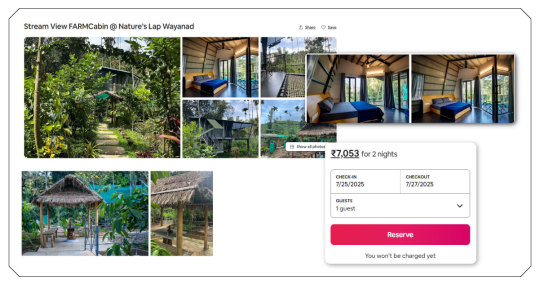
The digital ecosystem for travel has expanded. Scraping opportunities now extend beyond traditional review sites and booking engines:
Event platforms (e.g., Meetup, Eventbrite): Discover pop-up walking tours, food tastings, or language immersion classes
Content creator sites (e.g., Substack, Medium): Find long-form personal travel stories that reveal emotional motivations and new locales
Short video platforms (e.g., TikTok, Reels): Extract visual data and trending destinations through visual storytelling and influencer geotags
Local tourism agency portals: Often overlooked, these can reveal government-endorsed community travel initiatives or heritage mapping projects
Travel companies can innovate faster and design authentic, forward-looking experiences by collecting and correlating this data.
Seasonal and Regional Pattern Recognition for Targeted Offerings
Travel scraping API provides clarity on both micro and macro trends:
Seasonal data: Analyze when specific experiences spike in popularity, like Northern Lights viewing in specific parts of Finland or cherry blossom hikes in rural Japan.
Regional rotation: Identify destinations that suddenly become popular due to geopolitical stability, new flight connections, or viral content.
Such pattern recognition helps companies develop bespoke packages, smarter marketing calendars, and influencer collaborations.
How Scraped Data Enhances Traveler Confidence and Decision-Making?
Travelers want to make informed choices, especially when venturing into niche territories. Hotel data scraping and repurposing it into clean, usable formats enhances decision-making for both travelers and planners.
Trust builds when users see authentic feedback from micro-communities.
Real-time updates about road conditions, safety, or weather alerts keep expectations grounded.
Comparisons across experiences help travelers gauge value, cultural sensitivity, and emotional resonance.
When companies surface this data contextually — in trip planners, apps, or landing pages — they provide clarity and confidence to travelers seeking unique journeys.
How Travel Scrape Can Help You?
Custom Hotel Data Extraction: We provide tailored hotel data scraping solutions to extract real-time room availability, star ratings, amenities, guest reviews, images, and pricing across major OTAs, hotel chains, and independent booking sites.
Dynamic Travel Fare Monitoring: Our services enable the continuous scraping of airline, train, and bus fare data, tracking fluctuations, and route availability for smarter travel comparison and budget planning.
Vacation Rental Data Collection: We scrape detailed listings from platforms like Airbnb and Vrbo, including nightly rates, host information, cleaning fees, booking trends, and guest feedback for vacation rental analysis.
Location-Based Travel Intelligence: By extracting travel experience data from regional tourism sites, events boards, maps, and travel blogs, we help businesses identify emerging destinations and hidden gems.
Real-Time API Access for Travel Aggregators: Our robust travel scraping API delivers structured data feeds for hotels, flights, and activities, allowing aggregators to power search engines, mobile apps, or recommendation engines with fresh and accurate data.
Conclusion
As 2025 unfolds, the travel landscape will be less about ticking destinations off a list and more about meaningful journeys, personal stories, and cultural resonance. Travel web scraping from dynamic, diverse sources is the foundation that powers this shift. It allows travel aggregators' scraping tools to help brands, platforms, and entrepreneurs keep pace with ever-evolving preferences, build trust with hyper-personalization, and uncover experiences that speak directly to the soul of modern travelers.
By continuing to scrape local experience data, leverage AI travel discovery, and follow emerging regional trends, niche travel providers are not just curating trips — they are crafting transformative journeys. With access to vacation rental pricing data 2025, travelers eager to explore deeper and differently will find this fusion of data and discovery their gateway to the world.
Ready to elevate your travel business with cutting-edge data insights? Get in touch with Travel Scrape today to explore how our end-to-end data solutions can uncover new revenue streams, enhance your offerings, and strengthen your competitive edge in the travel market.
Source :
#NicheTravelExperiences2025#AlternativeTravelDestinations#ScrapeLocalExperienceData#AITravelDiscovery#TravelTrends2025#ScrapeAdventureTravel#CustomItineraryGenerator#AITravelExploration#HiddenGemDestinations2025
0 notes
Text
Why Travel Scraping is Crucial for OTA Companies in 2025
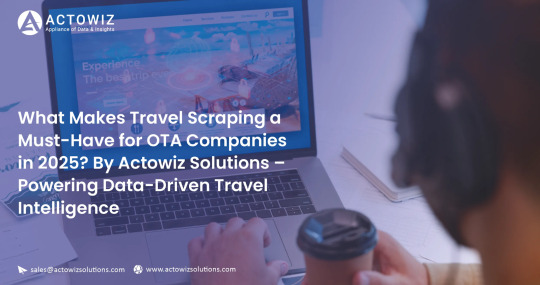
Introduction
Online Travel Agencies (OTAs) are facing intense pressure in 2025 to deliver real-time pricing, instant availability, and hyper-personalized offers. With platforms like Booking.com, Expedia, Agoda, MakeMyTrip, Airbnb, and Skyscanner evolving rapidly, the need for competitive intelligence and dynamic content tracking has never been more critical.
Travel scraping—the extraction of structured travel data from various OTA, airline, and hotel platforms—has become a strategic weapon. With Actowiz Solutions, travel aggregators, pricing engines, and marketplace platforms are harnessing scraping to outpace competitors and meet traveler expectations in real time.
Why Travel Scraping Is Essential in 2025
1. Dynamic Pricing Dominates
Airlines and hotels change prices hourly—sometimes minute-by-minute.
85% of flights and hotel rates experience at least one pricing shift per day (Source: Actowiz Travel Data, 2025).
Travel scraping allows OTAs to:
Capture price drops instantly
Align or beat competitor prices
Alert users in real time
2. Inventory Shifts Are Constant
Hotel availability and airline seat inventory fluctuate based on:
Events/festivals
Weather patterns
Cancellation surges
Actowiz scraping pipelines detect:
Room category changes
Seat class stockouts
Last-minute opening of premium rooms
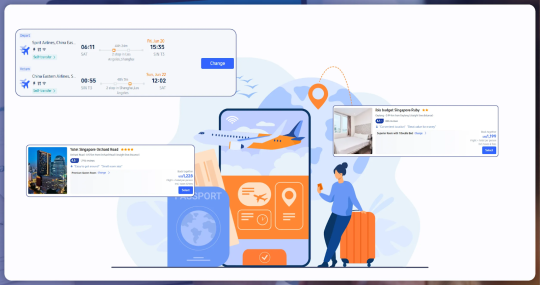
What Travel Data Can Be Scraped?
Flight Pricing:
Platforms Tracked: Skyscanner, Kayak, Google Flights
Value Delivered: Dynamic airfare monitoring
Hotel Rates:
Platforms Tracked: Booking.com, Agoda, Airbnb, Expedia
Value Delivered: Price comparison & availability
Car Rentals:
Platforms Tracked: Hertz, Avis, Zoomcar, Turo
Value Delivered: Local rental pricing trends
Reviews & Ratings:
Platforms Tracked: TripAdvisor, Google Travel, OTA reviews
Value Delivered: Sentiment tracking & customer feedback
Vacation Packages:
Platforms Tracked: MMT, Yatra, Priceline
Value Delivered: Promotion benchmarking
City Taxes/Fees:
Platforms Tracked: Regional travel portals
Value Delivered: Accurate final price display
Sample Data: Hotel Room Rate Changes (Mumbai, June 2025)
June 5:
Hotel: The Taj Palace
OTA: Booking.com
Room Type: Deluxe Suite
Price: ₹18,200
Availability: Available
June 6:
Hotel: The Taj Palace
OTA: Agoda
Room Type: Deluxe Suite
Price: ₹17,550
Availability: Low Stock
June 7:
Hotel: The Taj Palace
OTA: MMT (MakeMyTrip)
Room Type: Deluxe Suite
Price: ₹19,000
Availability: Sold Out
Insight:
OTAs using Actowiz scraping can automatically adjust markups, suggest alternates, or promote similar listings.
Competitive Edge from Travel Scraping
🏷️ Dynamic Price Matching
Actowiz enables auto-repricing for airlines or hotels listed across multiple platforms.
Detect when a competitor undercuts your offer and adjust in real time.
📆 Smart Availability Monitoring
Room inventory or flight seats running low?
Actowiz triggers price hikes or urgency messages on your OTA interface.
⭐ Sentiment & Review Analysis
Track real-time guest reviews across platforms
Identify top-rated amenities per city or hotel
Integrate feedback trends into listings
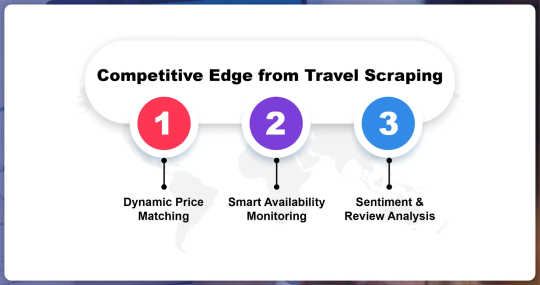
Visual Insight: Average Flight Fare Trends (New York to Dubai, June 2025)
![Flight Price Trend Placeholder Chart]
June 1:
Platform: Expedia
Avg Fare: $620
June 3:
Platform: Kayak
Avg Fare: $645
June 5:
Platform: Skyscanner
Avg Fare: $599
Actowiz’s scraping dashboards allow real-time fare visualization and anomaly detection.
Actowiz Travel Scraping Architecture
✅ High-volume crawling of OTAs, airline, and hotel platforms
✅ Anti-bot bypass (captcha solving, rotating IPs, mobile headers)
✅ Multi-country support across 70+ travel platforms
✅ Delivery via API, CSV, or dashboard
✅ Geo-tagged metadata (city, hotel zone, flight route)
Use Case: OTA Price Benchmarking in Real-Time
Challenge:
An Indian OTA was losing bookings due to inconsistent pricing on global hotel listings.
Solution:
Actowiz monitored 100,000+ hotel prices across Booking.com, Expedia, and Agoda daily.
Detected discrepancies and automated realignment of hotel rates via dynamic feed.
Results:
23% increase in completed bookings
17% reduction in bounce rate due to price mismatch
Review Tracking Sample: Dubai Hotels (June 2025)
Atlantis Dubai:
OTA: TripAdvisor
Review Count: 12,350
Avg Rating: 4.8
Top Keywords: "aqua park", "view"
JW Marriott:
OTA: Booking.com
Review Count: 8,790
Avg Rating: 4.5
Top Keywords: "breakfast", "staff"
Burj Al Arab:
OTA: Expedia
Review Count: 15,410
Avg Rating: 4.9
Top Keywords: "luxury", "spa"
Actowiz NLP Engine summarizes reviews for OTA content and email campaign personalization.
Monitoring Flash Sales and Deals
Capture limited-time deals (Black Friday, Eid, Summer Sales)
Scrape promo banners and hidden offers
Compare bundled travel packages
Actowiz alerting system notifies your pricing team within minutes of new sales going live across any global platform.
Benefits for OTA Teams
📊 Marketing
Run competitor deal-matching campaigns
Build demand-based newsletters using scraped insights
Geo-target ads based on travel trend shifts
🤖 Technology
Integrate live pricing APIs
Feed scraped content into booking engines
Enhance hotel listing accuracy
💼 Business Development
Track inventory of hotel/airline partners
Identify underperforming listings
Benchmark third-party inventory vs direct pricing
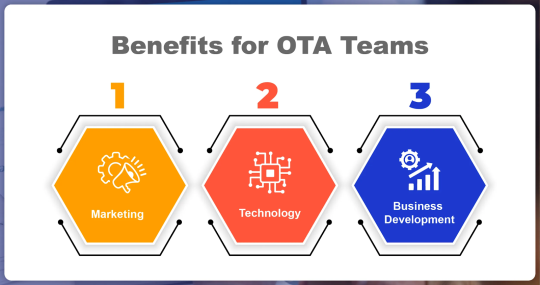
Regional Examples: Country-Wise OTA Scraping Priorities
USA:
Key Platforms: Expedia, Priceline
Use Cases: Airline fare monitoring, hotel bundles
India:
Key Platforms: MakeMyTrip, Yatra
Use Cases: Holiday package optimization
UAE:
Key Platforms: Booking, Trip.com, Agoda
Use Cases: Dynamic hotel inventory, Arab festival demand
UK:
Key Platforms: Kayak, LastMinute
Use Cases: Flash sales tracking
Singapore:
Key Platforms: Agoda, Airbnb
Use Cases: Tourist traffic forecasting via inventory data
Future-Forward Travel Intelligence
In 2025 and beyond, scraping isn’t just a support tool—it’s a core engine that feeds OTA personalization, dynamic pricing, and UX enhancements.
Actowiz Solutions is pioneering this with:
Airline route intelligence
Hotel price forecasting models
Vacation search keyword tracking
Local travel event calendars for prediction models
Final Thoughts
The travel industry is evolving at breakneck speed. OTAs that don’t operate with real-time, scraped insights risk being left behind.
Actowiz Solutions delivers travel scraping as a service—empowering your OTA with flight, hotel, and rental pricing at scale, sentiment tracking, and market-wide availability scanning.
Learn More >>
0 notes
Text
Automating Restaurant Menu Data Extraction Using Web Scraping APIs
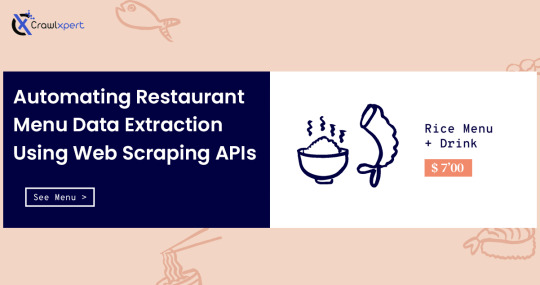
Introduction
The food and restaurant business sector is going very heavily digital with millions of restaurant menus being made available through online platforms. Companies that are into food delivery, restaurant aggregation, and market research require menu data on a real-time basis for competition analysis, pricing strategies, and enhancement of customer experience. Manually collecting and updating this information is time-consuming and a laborious endeavor. This is where web scraping APIs come into play with the automated collection of such information to scrape restaurant menu data efficiently and accurately.
This guide discusses the importance of extracting restaurant menu data, how web scraping works for this use case, some challenges to expect, the best practices in dealing with such issues, and the future direction of menu data automation.
Why Export Restaurant Menu Data?
1. Food Delivery Service
Most online food delivery services, like Uber Eats, DoorDash, and Grubhub, need real-time menu updates for accurate pricing or availability. With the extraction of restaurant menu data, at least those online platforms are kept updated and discrepancies avoidable.
2. Competitive Pricing Strategy
Restaurants and food chains make use of web scraping restaurant menu data to determine their competitors' price positions. By tracking rival menus, they will know how they should price their products to remain competitive in the marketplace.
3. Nutritional and Dietary Insights
Health and wellness platforms utilize menu data for dietary recommendations to customers. By scraping restaurant menu data, these platforms can classify foods according to calorie levels, ingredients, and allergens.
4. Market Research and Trend Analysis
This is the group of data analysts and research firms collecting restaurant menu data to analyze consumer behavior about cuisines and track price variations with time.
5. Personalized Food Recommendations
Machine learning and artificial intelligence now provide food apps with the means to recommend meals according to user preferences. With restaurant menu data web scraping, food apps can access updated menus and thus afford personalized suggestions on food.
How Web Scraping APIs Automate Restaurant Menu Data Extraction
1. Identifying Target Websites
The first step is selecting restaurant platforms such as:
Food delivery aggregators (Uber Eats, DoorDash, Grubhub)
Restaurant chains' official websites (McDonald's, Subway, Starbucks)
Review sites (Yelp, TripAdvisor)
Local restaurant directories
2. Sending HTTP Requests
Scraping APIs send HTTP requests to restaurant websites to retrieve HTML content containing menu information.
3. Parsing HTML Data
The extracted HTML is parsed using tools like BeautifulSoup, Scrapy, or Selenium to locate menu items, prices, descriptions, and images.
4. Structuring and Storing Data
Once extracted, the data is formatted into JSON, CSV, or databases for easy integration with applications.
5. Automating Data Updates
APIs can be scheduled to run periodically, ensuring restaurant menus are always up to date.
Data Fields Extracted from Restaurant Menus
1. Restaurant Information
Restaurant Name
Address & Location
Contact Details
Cuisine Type
Ratings & Reviews
2. Menu Items
Dish Name
Description
Category (e.g., Appetizers, Main Course, Desserts)
Ingredients
Nutritional Information
3. Pricing and Discounts
Item Price
Combo Offers
Special Discounts
Delivery Fees
4. Availability & Ordering Information
Available Timings
In-Stock/Out-of-Stock Status
Delivery & Pickup Options
Challenges in Restaurant Menu Data Extraction
1. Frequent Menu Updates
Restaurants frequently update their menus, making it challenging to maintain up-to-date data.
2. Anti-Scraping Mechanisms
Many restaurant websites implement CAPTCHAs, bot detection, and IP blocking to prevent automated data extraction.
3. Dynamic Content Loading
Most restaurant platforms use JavaScript to load menu data dynamically, requiring headless browsers like Selenium or Puppeteer for scraping.
4. Data Standardization Issues
Different restaurants structure their menu data in various formats, making it difficult to standardize extracted information.
5. Legal and Ethical Considerations
Extracting restaurant menu data must comply with legal guidelines, including robots.txt policies and data privacy laws.
Best Practices for Scraping Restaurant Menu Data
1. Use API-Based Scraping
Leveraging dedicated web scraping APIs ensures more efficient and reliable data extraction without worrying about website restrictions.
2. Rotate IP Addresses & Use Proxies
Avoid IP bans by using rotating proxies or VPNs to simulate different users accessing the website.
3. Implement Headless Browsers
For JavaScript-heavy pages, headless browsers like Puppeteer or Selenium can load and extract dynamic content.
4. Use AI for Data Cleaning
Machine learning algorithms help clean and normalize menu data, making it structured and consistent across different sources.
5. Schedule Automated Scraping Jobs
To maintain up-to-date menu data, set up scheduled scraping jobs that run daily or weekly.
Popular Web Scraping APIs for Restaurant Menu Data Extraction
1. Scrapy Cloud API
A powerful cloud-based API that allows automated menu data scraping at scale.
2. Apify Restaurant Scraper
Apify provides pre-built restaurant scrapers that can extract menu details from multiple platforms.
3. Octoparse
A no-code scraping tool with API integration, ideal for businesses that require frequent menu updates.
4. ParseHub
A flexible API that extracts structured restaurant menu data with minimal coding requirements.
5. CrawlXpert API
A robust and scalable solution tailored for web scraping restaurant menu data, offering real-time data extraction with advanced anti-blocking mechanisms.
Future of Restaurant Menu Data Extraction
1. AI-Powered Menu Scraping
Artificial intelligence will improve data extraction accuracy, enabling automatic menu updates without manual intervention.
2. Real-Time Menu Synchronization
Restaurants will integrate web scraping APIs to sync menu data instantly across platforms.
3. Predictive Pricing Analysis
Machine learning models will analyze scraped menu data to predict price fluctuations and customer demand trends.
4. Enhanced Personalization in Food Apps
By leveraging scraped menu data, food delivery apps will provide more personalized recommendations based on user preferences.
5. Blockchain for Menu Authentication
Blockchain technology may be used to verify menu authenticity, preventing fraudulent modifications in restaurant listings.
Conclusion
Automating the extraction of restaurant menus from the web through scraping APIs has changed the food industry by offering real-time prices, recommendations for food based on liking, and analysis of competitors. With advances in technology, more AI-driven scraping solutions will further improve the accuracy and speed of data collection.
Know More : https://www.crawlxpert.com/blog/restaurant-menu-data-extraction-using-web-scraping-apis
#RestaurantMenuDataExtraction#ScrapingRestaurantMenuData#ExtractRestaurantMenus#ScrapeRestaurantMenuData
0 notes
Text
TripAdvisor Travel Datasets - Web Scraping TripAdvisor Travel Data
Access TripAdvisor travel datasets with web scraping TripAdvisor travel data for prices, listings, availability, and review analysis.
Read More >> https://www.arctechnolabs.com/tripadvisor-travel-data-scraping-services.php
#TripAdvisorTravelDatasets#ScrapingTripAdvisorTravelData#TravelDataScrapingServices#TravelPriceDatasets#TravelWebScrapingDatasets#TravelDataScraping#WebScrapingServices#ArcTechnolabs
0 notes
Text
🧳 TripAdvisor Reviews Aren’t Just Feedback, They’re Forecasts
What if you could turn millions of traveller opinions into data-driven insights?
🌍 From spotting trends to beating the competition, scraping TripAdvisor gives travel businesses the edge, and PromptCloud makes it effortless, ethical, and scalable.
📖 Read the full blog → https://tinyurl.com/j3jxmb73
0 notes
Text
NLP Sentiment Analysis | Reviews Monitoring for Actionable Insights
NLP Sentiment Analysis-Powered Insights from 1M+ Online Reviews

Business Challenge

A global enterprise with diversified business units in retail, hospitality, and tech was inundated with customer reviews across dozens of platforms:
Amazon, Yelp, Zomato, TripAdvisor, Booking.com, Google Maps, and more. Each platform housed thousands of unstructured reviews written in multiple languages — making it ideal for NLP sentiment analysis to extract structured value from raw consumer feedback.
The client's existing review monitoring efforts were manual, disconnected, and slow. They lacked a modern review monitoring tool to streamline analysis. Key business leaders had no unified dashboard for customer experience (CX) trends, and emerging issues often went unnoticed until they impacted brand reputation or revenue.
The lack of a central sentiment intelligence system meant missed opportunities not only for service improvements, pricing optimization, and product redesign — but also for implementing a robust Brand Reputation Management Service capable of safeguarding long-term consumer trust.
Key pain points included:
No centralized system for analyzing cross-platform review data
Manual tagging that lacked accuracy and scalability
Absence of real-time CX intelligence for decision-makers
Objective
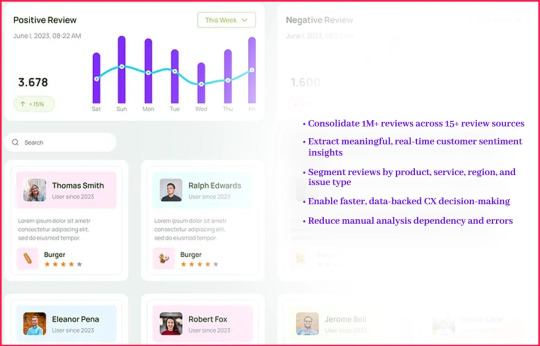
The client set out to:
Consolidate 1M+ reviews across 15+ review sources
Extract meaningful, real-time customer sentiment insights
Segment reviews by product, service, region, and issue type
Enable faster, data-backed CX decision-making
Reduce manual analysis dependency and errors
Their goal: Build a scalable sentiment analysis system using a robust Sentiment Analysis API to drive operational, marketing, and strategic decisions across business units.
Our Approach

DataZivot designed and deployed a fully-managed NLP-powered review analytics pipeline, customized for the client's data structure and review volume. Our solution included:
1. Intelligent Review Scraping
Automated scraping from platforms like Zomato, Yelp, Amazon, Booking.com
Schedule-based data refresh (daily & weekly)
Multi-language support (English, Spanish, German, Hindi)
2. NLP Sentiment Analysis
Hybrid approach combining rule-based tagging with transformer-based models (e.g., BERT, RoBERTa)
Sentiment scores (positive, neutral, negative) and sub-tagging (service, delivery, product quality)
Topic modeling to identify emerging concerns
3. Categorization & Tagging
Entity recognition (locations, product names, service mentions)
Keyword extraction for trend tracking
Complaint type detection (delay, quality, attitude, etc.)
4. Insights Dashboard Integration
Custom Power BI & Tableau dashboards
Location, time, sentiment, and keyword filters
Export-ready CSV/JSON options for internal analysts
Results & Competitive Insights

DataZivot's solution produced measurable results within the first month:
These improvements gave the enterprise:
Faster product feedback loops
Better pricing and menu optimization for restaurants
Localized insights for store/service operations
Proactive risk mitigation (e.g., before issues trended on social media)
Want to See the Dashboard in Action?
Book a demo or download a Sample Reviews Dataset to experience the power of our sentiment engine firsthand.
Contact Us Today!
Dashboard Highlights

The custom dashboard provided by DataZivot enabled:
Review Sentiment Dashboard featuring sentiment trend graphs (daily, weekly, monthly)
Top Keywords by Sentiment Type ("slow service", "friendly staff")
Geo Heatmaps showing regional sentiment fluctuations
Comparative Brand Insights (across subsidiaries or competitors)
Dynamic Filters by platform, region, product, date, language
Tools & Tech Stack

To deliver the solution at scale, we utilized:
Scraping Frameworks: Scrapy, Selenium, BeautifulSoup
NLP Libraries: spaCy, TextBlob, Hugging Face Transformers (BERT, RoBERTa)
Cloud Infrastructure: AWS Lambda, S3, EC2, Azure Functions
Dashboards & BI: Power BI, Tableau, Looker
Languages Used: Python, SQL, JavaScript (for dashboard custom scripts)
Strategic Outcome

By leveraging DataZivot’s NLP infrastructure, the enterprise achieved:
Centralized CX Intelligence: CX leaders could make decisions based on real-time, data-backed feedback
Cross-Industry Alignment: Insights across retail, hospitality, and tech units led to unified improvement strategies
Brand Perception Tracking: Marketing teams tracked emotional tone over time and correlated with ad campaigns
Revenue Impact: A/B-tested updates (product tweaks, price changes) showed double-digit improvements in review sentiment and NPS
Conclusion
This case study proves that large-scale review analytics is not only possible — it’s essential for modern enterprises managing multiple consumer-facing touchpoints. DataZivot’s approach to scalable NLP and real-time sentiment tracking empowered the client to proactively manage their brand reputation, uncover hidden customer insights, and drive growth across verticals.
If your organization is facing similar challenges with fragmented review data, inconsistent feedback visibility, or a slow response to customer sentiment — DataZivot’s sentiment intelligence platform is your solution.
#NLPSentimentAnalysis#CrossPlatformReviewData#SentimentAnalysisAPI#BrandReputationManagement#ReviewMonitoringTool#IntelligentReviewScraping#ReviewSentimentDashboard#RealTimeSentimentTracking#ReviewAnalytics
0 notes
Text
How to get information form Tripadvisor
Tripadvisor is the world’s largest and most visited travel community and review website, and its biggest feature is the authenticity of website reviews. Now, the website has become a large travel online database, with a large number of user generated content (UGC) and accommodation information of tourist attractions.
Introduction to the scraping tool
ScrapeStorm is a new generation of Web Scraping Tool based on artificial intelligence technology. It is the first scraper to support both Windows, Mac and Linux operating systems.
Preview of the scraped result

1. Create a task

(2) Create a new smart mode task
You can create a new scraping task directly on the software, or you can create a task by importing rules.
How to create a smart mode task

2. Configure the scraping rules
Smart mode automatically detects the fields on the page. You can right-click the field to rename the name, add or delete fields, modify data, and so on.

3. Set up and start the scraping task
(1) Run settings
Choose your own needs, you can set Schedule, IP Rotation&Delay, Automatic Export, Download Images, Speed Boost, Data Deduplication and Developer.


4. Export and view data

(2) Choose the format to export according to your needs.
ScrapeStorm provides a variety of export methods to export locally, such as excel, csv, html, txt or database. Professional Plan and above users can also post directly to wordpress.
How to view data and clear data
How to export data
0 notes
Text
How To Scrape TripAdvisor Reviews Using Python?
For travelers, web scraping TripAdvisor reviews is a handy tool for planning trips. This way, you can choose where to stay, what places to visit, and what activities to try. It's all about making your travel experience unique and tailored by ReviewGators just for you.
1 note
·
View note
Text
Restaurant Reviews Data Scraping

Enhance Your Business Insights with Restaurant Reviews Data Scraping Services by DataScrapingServices.com. In the dynamic world of the restaurant industry, understanding customer preferences and feedback is essential for success. Online reviews play a pivotal role in shaping a restaurant’s reputation and can significantly influence potential customers’ dining decisions. However, manually gathering and analyzing these reviews can be a time-consuming and daunting task. DataScrapingServices.com offers a comprehensive solution with our Restaurant Reviews Data Scraping Services, providing businesses with the insights they need to stay ahead in a competitive market.
Restaurant reviews on platforms such as Yelp, Google, and TripAdvisor offer a treasure trove of information about customer experiences, preferences, and areas for improvement. These reviews can provide invaluable insights into what customers love about your restaurant and what aspects need attention. DataScrapingServices.com specializes in extracting and organizing this data efficiently, allowing you to focus on leveraging these insights to enhance your business operations, marketing strategies, and overall customer satisfaction.
List of Data Fields
Our Restaurant Reviews Data Scraping Services collect a wide array of data fields to give you a detailed and comprehensive overview of customer feedback:
- Restaurant Name: Ensure reviews are correctly attributed to specific restaurant locations.
- Reviewer Name: Identify individual reviewers and potential repeat customers.
- Review Date: Track trends over time and correlate reviews with specific events or changes.
- Review Rating: Aggregate ratings to gauge overall customer satisfaction.
- Review Text: Analyze detailed feedback for insights into customer experiences.
- Reviewer Location: Understand the geographical distribution of your customer base.
- Reviewer Profile Link: Access additional information about reviewers for deeper analysis.
- Response to Reviews: Track how businesses respond to feedback, which can impact customer perception.
- Review Source: Identify the platform from which the review was extracted (e.g., Yelp, Google, TripAdvisor).
Benefits of Restaurant Reviews Data Scraping
1. Improved Customer Insights
By scraping restaurant reviews, you gain a deeper understanding of what customers appreciate and what they find lacking. This detailed feedback allows you to make informed decisions about menu offerings, customer service improvements, and overall business strategies.
2. Enhanced Reputation Management
Monitoring reviews enables you to quickly identify and address negative feedback. Proactive management of your online reputation helps mitigate potential damage and demonstrates to customers that you value their opinions and are committed to improving their experience.
3. Competitive Analysis
By analyzing reviews of competitors, you can identify their strengths and weaknesses. This information can inform your own business strategies, helping you to capitalize on competitor shortcomings and adopt best practices that resonate with customers.
4. Data-Driven Marketing
Understanding the language and sentiments expressed in reviews can inform your marketing strategies. Highlighting positive aspects that customers frequently mention can enhance your promotional efforts and attract more potential customers.
5. Operational Improvements
Detailed review analysis can uncover specific operational issues, such as long wait times or unhelpful staff.
Best Restaurant Data Scraping Services
Restaurant Menu Data Scraping from Menupages.com
Restaurant Reviews Data Scraping
Scrape GrubHub Restaurant Listings
DoorDash Restaurant Data Scraping
USA Restaurant Database Scraping
Restaurant Review Data Extraction
Chick-fil-A Restaurant Data Scraping
Extract Restaurant Data From Google Maps
Best Restaurant Reviews Data Scraping Services in USA
Austin, San Antonio, Philadelphia, Indianapolis, Fort Wichita, Nashville, Long Beach, Raleigh, Boston, Orlando, San Diego, Houston, Worth, Kansas City, Sacramento, San Francisco, Omaha, Honolulu, El Paso, Washington, Colorado, Chicago, Jacksonville, Denver, New Orleans, Columbus, Arlington, Oklahoma City, Atlanta, Seattle, Dallas, Portland, Los Angeles, Virginia Beach, Springs, Bakersfield, Miami, Louisville, Albuquerque, Tulsa, Milwaukee, Memphis, Las Vegas, San Jose, Tucson and New York.
Conclusion
In the competitive restaurant industry, having access to detailed and up-to-date review data is essential for success. Restaurant Reviews Data Scraping Services by DataScrapingServices.com provide a powerful tool for restaurant owners and managers to gather and leverage this data. With our comprehensive data extraction services, you can enhance your customer insights, manage your online reputation, perform competitive analysis, and make data-driven decisions. Unlock the potential of customer feedback with DataScrapingServices.com and take your restaurant strategies to the next level. Contact us today to learn more about how our Restaurant Reviews Data Scraping Services can benefit your business.
Website: Datascrapingservices.com
Email: [email protected]
#restaurantreviewsdatascraping#scrapingrestaurantreviews#usarestaurantdatabasescraping#restaurantdatabaseusa#restaurantdatabasescraping#restaurantdatabase#datascrapingservices#webscrapingexpert#websitedatascraping
0 notes
Text
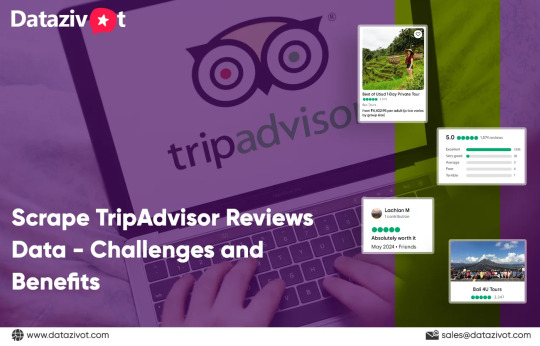
Scrape-TripAdvisor-Reviews-Data-Challenges-and-Benefits Introduction In the digital age, user-generated content has become a cornerstone of the travel and hospitality industry. Platforms like TripAdvisor provide a wealth of information through reviews and ratings, which can be invaluable for businesses and researchers alike
#TravelReviewsDataScraping#ExtractTravelReviewsData#ScrapeTravelReviewsData#WebScrapingHotelReviews#TravelReviewsDataCollection#TravelReviewsDataScraper
0 notes
Text
AI-Powered Travel Data Scraping for Trip Planning in 2025
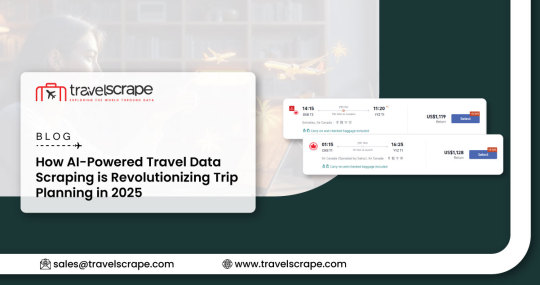
Introduction
The world of travel is undergoing a radical shift in 2025, moving beyond traditional planning toward innovative, intuitive experiences powered by cutting-edge AI travel planner 2025 technology. Static itineraries or generic recommendations no longer bind travelers. Instead, AI-Powered Travel Data Scraping is revolutionizing how journeys are crafted, using real-time insights and preferences to deliver hyper-personalized adventures. This transformation's core is travel data scraping, which allows AI systems to collect and process massive volumes of information from flight databases, hotel platforms, local events, and user reviews. The AI travel planner 2025 doesn't just streamline logistics—it anticipates needs, understands traveler behavior, and creates dynamic travel solutions that adapt as plans evolve. Whether exploring hidden gems or organizing a multi-country itinerary, this new era of AI-powered trip planning ensures a seamless and intelligent experience, bringing convenience, personalization, and excitement to every travel journey.
The Evolution of Trip Planning
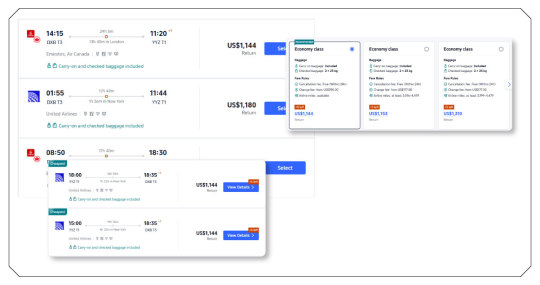
Gone are the days of flipping through travel guides or spending hours browsing websites to piece together the perfect itinerary. Today, platforms can scrape travel websites to gather comprehensive data from flights, hotels, attractions, and reviews in seconds. These systems analyze millions of data points to present travelers with options that align with their preferences, budgets, and schedules. Imagine planning a week-long trip to Paris with just a few clicks, as AI pulls together flight deals, hotel availability, and even local restaurant recommendations tailored to your taste.
The beauty of trip planning tools 2025 lies in their ability to streamline the process. These tools don’t just collect data; they interpret it, learning from user inputs and global travel trends to offer suggestions that feel almost psychic. Whether you’re a solo backpacker or planning a family vacation, these platforms adapt to your needs, making travel planning less about logistics and more about excitement.
How AI Transforms Travel Data into Insights?
At the core of this transformation are travel AI tools, which use sophisticated algorithms to process data scraped from various sources. These tools can extract travel itinerary data from booking platforms, social media, and travel blogs, creating a holistic view of what’s available. For example, an AI might analyze flight prices across multiple airlines, cross-reference them with hotel deals, and even factor in local events to suggest the best time to visit a destination.
This process, known as smart travel scraping, goes beyond basic data collection. It involves understanding context—such as seasonal price fluctuations or traveler reviews—to provide practical and inspiring recommendations. By compiling this information, AI ensures that every aspect of your trip, from transportation to activities, is optimized for value and enjoyment.
Personalization at Its Best
One of the standout features of data scraping for trip planning is its ability to deliver hyper-personalized experiences. An AI travel assistant doesn’t just throw generic suggestions at you; it learns from your past trips, preferences, and even social media activity to craft a journey that feels uniquely yours. Love adventure sports? The AI might recommend a hiking trip in the Alps with specific trails based on your fitness level. Prefer cultural immersion? It could suggest a curated list of museums, local festivals, and hidden gems in Kyoto.
This customization level is possible because AI can scrape travel app data from platforms like Airbnb, TripAdvisor, or Google Maps. The AI identifies trends and preferences that align with your travel style by analyzing user-generated content, such as reviews and ratings. It’s like having a personal travel agent who knows you better than you know yourself.
The Role of AI in the Travel Industry
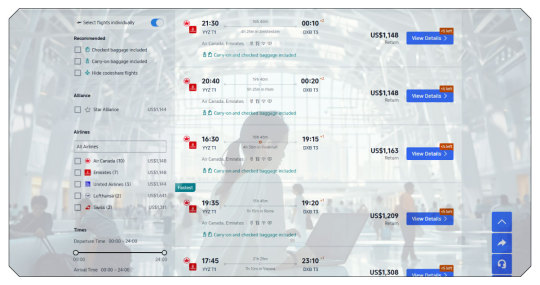
The integration of AI in travel industry is not just about convenience; it’s about creating smarter, more informed decisions. For instance, AI can automate travel planning by handling repetitive tasks like comparing flight prices or checking visa requirements. This automation frees up time for travelers to focus on the fun parts of planning, like choosing activities or dreaming about their destination.
Moreover, AI-driven travel experiences are reshaping how we interact with travel platforms. AI-powered chatbots can answer questions in real time, offering advice on everything from packing tips to local customs. These systems are constantly updated with real-time travel data, ensuring you have the most current information, whether it's a last-minute flight deal or a weather update for your destination.
The Power of Specialized Scraping Services
Specialized services like Travel Web Scraping Service play a crucial role in fueling these intelligent systems. These services are designed to collect data from various sources, including airline websites, hotel booking platforms, and travel forums. By aggregating this data, they provide the raw material that AI systems need to generate actionable insights.
Similarly, a Travel Scraping API allows developers to integrate travel data into their applications, enabling seamless access to flight schedules, hotel availability, and more. This technology empowers travel companies to offer dynamic pricing and real-time updates, ensuring travelers can always access the best deals.
For example, Airlines Data Scraping enables AI systems to monitor fare changes across multiple carriers, helping travelers snag the lowest prices. By analyzing historical data and current trends, these systems can even predict when prices are likely to drop, giving you a strategic edge in booking your flights.
Enhancing the Traveler’s Experience
The impact of AI-powered scraping extends beyond logistics to the essence of travel: the experience. By pulling data from diverse sources, AI can suggest off-the-beaten-path destinations or unique activities that align with your interests. For instance, it might recommend a lesser-known beach in Thailand based on glowing reviews scraped from travel blogs or suggest a cooking class in Italy after analyzing local event listings.
These recommendations are not random; they result from AI’s ability to process vast amounts of data and identify patterns humans might miss. This means travelers can discover hidden gems without spending hours researching, making every trip feel like a bespoke adventure.
The Future of Travel Planning

As we move further into 2025, the role of AI in travel is only set to grow. With AI systems learning to anticipate traveler needs with uncanny accuracy, the ability to scrape travel websites and apps will become even more sophisticated. Imagine a future where your AI travel assistant plans your itinerary and adjusts it on the fly based on real-time factors like flight delays or sudden weather changes.
The rise of trip-planning tools in 2025 also means that travel will become more accessible. By automating complex tasks and providing clear, data-driven recommendations, these tools empower everyone—from seasoned globetrotters to first-time travelers—to confidently plan trips. Whether booking a weekend getaway or a multi-country expedition, AI ensures the process is smooth and stress-free.
Real-World Applications
Consider a scenario where you’re planning a trip to New York City. An AI travel assistant could scrape data from airline websites to find the cheapest flights, analyze hotel reviews to recommend a stay centrally, and even suggest Broadway shows based on your interest in theater. If you’re traveling on a budget, the AI might prioritize free attractions or affordable dining options while factoring in real-time data like subway schedules or event cancellations.
For businesses, AI in travel industry applications is equally transformative. Travel agencies can use scraped data to offer tailored packages, while airlines and hotels can leverage insights to optimize pricing and improve customer satisfaction. The result is a win-win: travelers get better experiences, and businesses gain a competitive edge.
The Global Impact
On a broader scale, AI-driven travel experiences are making travel more inclusive and sustainable. By analyzing data on travel patterns, AI can suggest less crowded destinations, helping to reduce overtourism. It can also recommend eco-friendly options, like carbon-neutral flights or sustainable accommodations, aligning with the growing demand for responsible travel.
Moreover, the ability to scrape travel app data ensures that travelers can access information in their native language, breaking down barriers for international exploration. Whether navigating a new city or planning a cross-continental journey, AI makes the world feel smaller and more connected.
How Travel Scrape Can Help You?
Live Monitoring of Travel Platforms: We continuously scrape data from airline sites, hotel booking platforms, and transportation services to capture real-time availability, delays, and price fluctuations.
Geo-Specific Event Tracking: Our tools extract up-to-date information about local events, festivals, and regional happenings to align trip plans with dynamic cultural experiences.
Personalized Data Filters: We tailor scraping parameters based on traveler profiles—budget, preferences, and travel history—so the data only reflects relevant and timely options.
Instant Pricing Updates: Our custom scrapers instantly detect and report price drops, flash deals, or surge pricing, ensuring travelers make cost-effective decisions.
Weather and Safety Alerts Integration: We integrate weather and safety data into scraping feeds, allowing real-time itinerary adjustments based on climate disruptions or local advisories.
Conclusion
As we embrace 2025, AI-powered trip planning is ushering in a new era of smarter, more personalized, and endlessly exciting travel. With tools like Hotel Data Scraping, travelers can access real-time information on accommodations, ensuring they find the perfect place to stay at the best price. Similarly, Vacation Rental Pricing Data 2025 empowers users to compare options across platforms like Airbnb and Vrbo, securing deals that fit their budget. And with Travel Aggregators Scraping, AI systems can pull together the best offers from multiple sources, creating cost-effective and unforgettable itineraries.
In this brave new world of travel, AI-Powered Travel Data Scraping is more than a tool—it’s a gateway to experiences that are tailored, efficient, and inspiring. Whether you dream of a tropical escape or a cultural odyssey, AI is here to make your journey as remarkable as the destination. So, pack your bags and let AI take the wheel—your next adventure is just a few clicks away.
Ready to elevate your travel business with cutting-edge data insights? Get in touch with Travel Scrape today to explore how our end-to-end data solutions can uncover new revenue streams, enhance your offerings, and strengthen your competitive edge in the travel market.
Source :
#AITravelPlanner2025#AIPoweredTripPlanning#TravelDataScraping#ScrapeTravelWebsites#AITravelAssistant#TripPlanningTools2025#TravelAITools
0 notes
Text
How Customer Review Collection Brings Profitable Results?

What is the first thing you do when you're about to purchase? Do you rely on the brand's claims or the product's features? Or do you turn to other customers' experiences, seeking their insights and opinions? Knowing the first-hand experience through customer reviews builds trust.
Now, you can transform your role as a buyer, seller, or mediator by reading a few customer reviews and having a wide range of customer review collections. The power lies in extracting data from multiple resources, understanding various factors, and leveraging this knowledge to streamline your processes and efficiently bring quality returns.
This content will equip you with secret strategies for converting customer review collection into profitable actions to ensure your business's success. We will familiarize you with web scraping customer reviews from multiple sources and how companies optimize their marketing strategies to target potential leads.
What Is Customer Reviews Collection?
Review scraping services make retrieving customer review data from various websites and platforms to analyze valuable information easy and efficient. They streamline the complete process of collecting useful information and meet your goals with data stored in a structured format, giving you the confidence to leverage this data for your business's success.
Here are the common platforms to scrape review data of customers:AmazonYelpGlassdoorTripAdvisorTrustpilotCostcoGoogle ReviewsHomedepotShopeeIKEAZaraFlipkartLowesZalandoEtsyBigbasketAlibabaAmctheatresWalmartTargetRakuteneBayBestbuyWishShein
Customer review collection can be completed using web scraping tools, programs, or scripts to extract customer reviews from the desired location. This can include various forms of data, such as product ratings, reviews, images, reviewers' names, and other information if required. Collecting and analyzing this data lets you gain insights into customer preferences, product performance, and more.
How Is Customer Reviews Collection Profitable?
They are a source of customers' experience about specific goods and products, which means you can easily understand the pros and cons. Here are some of the benefits of data for your business that can help you generate quality returns:
Understand Your Products & Services
With access to structured customer reviews, understanding the positive and negative impacts on the audience becomes more manageable. This allows you to focus on the negative section, make necessary changes, and embrace the positive ones to grow and engage more audiences, inspiring your business's success.
Scraping Competitor Reviews
It is essential to know what you are up against in the market. With a custom review data scraper, you can easily filter the data you want to gather from where and when. This gives you the freedom to examine your competitors' positives and negatives. Now, you can build strategies to fulfill customer requirements where your competitors need to improve and improve services where they excel. This will ultimately grab the attention of potential users and boost profits efficiently.
Find The Top Selling Products & Services
It is a plus point if you know the popular products and services when entering a market irrelevant to your target industry. Some common platforms to extract customer reviews for services are Yelp and TripAdvisor, while people opt for Amazon, eBay, or Flipkart for products.

With billions of users active on each platform, you can analyze data about products and services from different locations, ages, genders, and more. The review scraping services use quality tools and resources to make data extraction effortless to understand.
Improve Your Marketing & Product Strategies
The customer reviews collection helps to optimize the production description and connect with your audience. Analyzing the data extracted can help you focus on customer-centric strategies to promote your products and services.
Also, you can get valuable insights about your team to take unbiased and accurate actions to enhance your business performance. Unlike customer forms, surveys, or other media for collecting customer feedback, product reviews are organic views explaining their experience. Customer reviews are unique in that they are often more detailed and provide a broader perspective, making them a valuable source of information for businesses.
Different Methods To Extract Customer Review Data
There are various methods available to scrape customer review data from multiple resources. Let you look at some of them:
Coding with Libraries
This involves using programming languages such as HTML, XPath, Python, Java, and others, depending on expertise. Then, use custom libraries or readily available ones like Beautiful Soup and Scrapy to parse website code and extract specific elements like ratings, text, and more.
Web Scraping Tools
Many software tools are designed for web scraping customer review data. These tools offer user-friendly interfaces to target website review sections and collect data without any code.
Scraping Review APIs
Some websites offer APIs (Application Programming Interfaces) allowing authorized review data access. This provides a structured way to collect reviews faster and effortlessly.
How Does Web Scraping Work For Customer Reviews Collection?

No matter which method you pick to extract customer review data, it is essential to meet the final target. Here is a standard procedure to collect desired data from multiple websites:
Define Web Pages
Creating a list of pages you need to scrape to gather customer review data is essential. Then, we will send HTTP requests to the target website to fetch the HTML content.
Parse HTML
Our experts will parse the content using libraries after fetching it. The aim is to convert the data into a structured format that is easy to understand.
Extraction
Web scrapers find elements like images, text, links, and more through tags, attributes, or classes. They gather and store this data in a desired format.
Organizing Data
Once you have stored the data in SCV, JSON, or a database for analysis, you can structure it efficiently. Multiple libraries are available to manage data for better visualization.
What To Do With Scraped Customer Review Collection Data?

You know the different methods and reasons for extracting customer review data. We will now give you insights about what to do next after gathering data from review scraping services:
Analysis
Go through your collected data to understand customer sentiments towards a particular resource. This involves analyzing customer reviews, looking for patterns or trends, and categorizing the feedback into positive, negative, or neutral. Having a wide range of information from different locations, platforms, and customers can help you find your business's and competitors' strengths and weaknesses.
For example, you might discover that customers love a particular product feature or need clarification on a specific aspect of your service. Allows you to connect with customers and personalize their experience to boost engagement rates.
Tracking
The market changes every second, so with the help of custom review, data scraper extraction will be done in real-time. This allows you to monitor the latest trends, demands, and updates. You can also figure out your business's USPs (Unique selling points) and quickly gain customer loyalty.
For example, you have tracked the market updates regularly for a particular location for previous months. Now, you know which product is highly purchased, the peak time of orders, and more details about the customers. This can help you optimize your promotions and target the right audience to have higher chances of conversions.
Strategize
After analyzing and monitoring the data, it is time to implement strategies to scale your business. Focus on the significant segments where customer reviews and opinions have made a difference. This can be a location, time duration, or a popular product with quality services.
For example, if you notice a trend of positive reviews for a particular product feature, you can emphasize that feature in your marketing campaigns. If you see a lot of negative feedback on a specific aspect of your service, you can address it and improve customer satisfaction. This could involve updating your product description, offering additional support for the feature, or adjusting your pricing strategy.
Social Profiling
Customer feedback helps optimize marketing strategies and gain the trust of other visitors. Social profiling means highlighting the positive customer reviews on your apps, websites, or social media channels.
You can demonstrate credibility by showcasing these reviews and letting potential customers make more informed decisions. This becomes an excellent source for new visitors to understand your services and the quality of customer care.
Wrapping It Up!
We have made your journey effective whether you are planning to scale your business, gain potential leads, understand the company's pros and cons, or gather information about competitors.
Web scraping has become a go-to solution for extracting customer review collection data stored in structured form for analysis. Pick the right tools, platforms, and experts to streamline the process. Whether dealing with competitor analysis, marketing, pricing, personalization, customer sentiments, or more, ensure you have a precise output for analysis.
At iWeb Scraping, a trusted provider of web data scraping services, we help you harness the power of customer review collection to boost your business's profits smartly. Data is dynamic and readily available. You need the right resources and expertise to convert that into high returns like ours.
0 notes
Text
Scrape Hotel Review Data from TripAdvisor - TripAdvisor Hotel Review Data Scraping Services
Scrape hotel review data from TripAdvisor for usernames, review text, ratings, images, etc. Use this data to improvising business status.
#ScrapeHotelReviewDatafromTripAdvisor#TripAdvisorHotelReviewDataScraping#ExtractTripAdvisorHotelReviewData#TripAdvisorHotelReviewDataScraper#TripAdvisorHotelReviewDataCollection
0 notes
Text
TripAdvisor Travel Datasets - Scraping TripAdvisor Travel Data
Unlock insights with TripAdvisor Travel Datasets by Scraping TripAdvisor Travel Data for hotel listings, pricing trends, reviews, amenities, and location analytics.
Read More >> https://www.arctechnolabs.com/tripadvisor-datasets.php
#ScrapeTripAdvisorTravelData#TripAdvisorHotelReviewsDataset#ScrapedTripAdvisorUserRatingData#TripAdvisorHotelReviewsScraper#TripAdvisorHotelDataset2025#StructuredTripAdvisorListingsDataset
0 notes